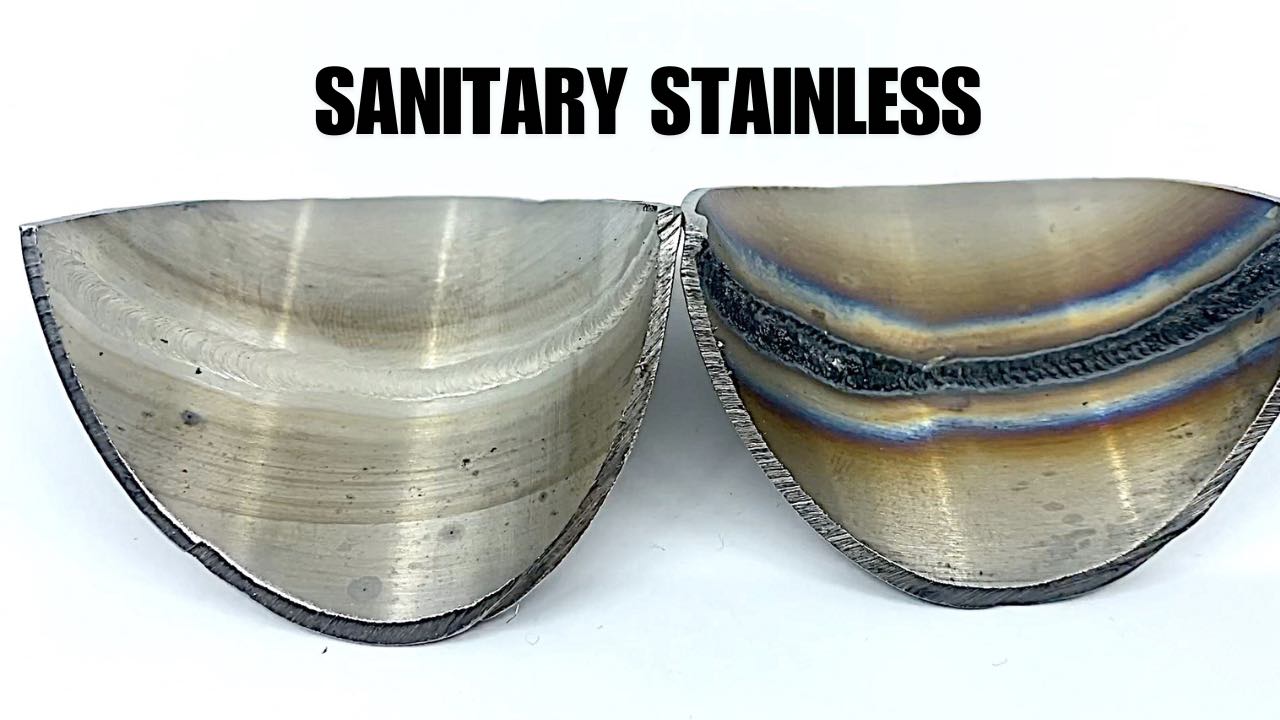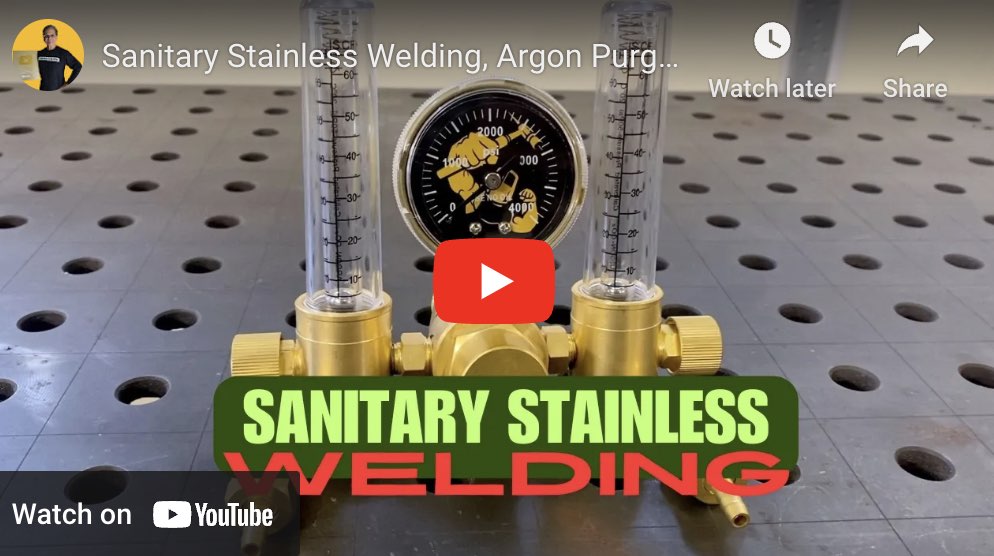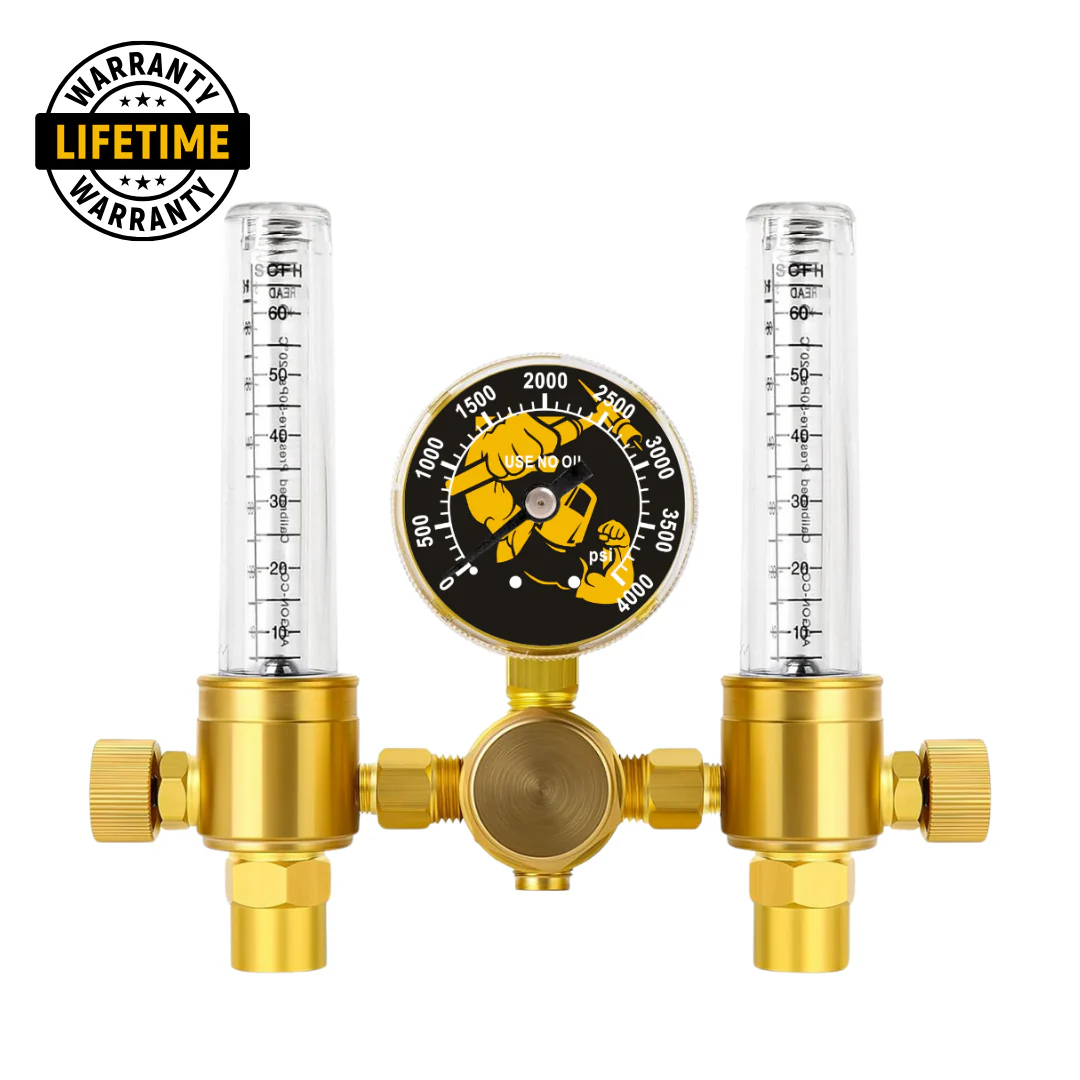Sanitary Stainless Welding - Video and Key Points
"Sanitary stainless welding" is the type of welding used in industries like food processing, pharmaceuticals, and biotechnology, where cleanliness, safety, and corrosion resistance are main weld qualities needed.
This type of welding aims to produce smooth, contaminant-free welds that are sanitary....to prevent bacteria buildup.
Here is an extreme example of a purged vs not purged stainless weld

Here are the main points for sanitary stainless steel welding:
1. Material Preparation
- Clean Surface: Stainless steel surfaces should be thoroughly cleaned of oils, dirt, and other contaminants before welding. The quality of the cut surface being welded weighs heavily on the cleanliness and quality of the final weld. That is why specially designed cut off saws and tools are often used to provide a smooth square cut that is free from grit or saw tooth marks. This helps prevent impurities from entering the weld. A popular saw in the sanitary stainless welding industry is a George Fischer saw.
- Avoiding Cross-Contamination: Dedicated tools and cleaning materials (such as stainless steel brushes) should be used to prevent contamination with carbon steel, which can cause rust and corrosion.
2. Filler Material
- Filler metal is often not used for sanitary stainless welding because the wall thickness is often thin enough for an autogenous weld. Addition of filler metal also increases the chances of introducing oxides into the puddle which can form oxide deposits on the internal surface…but when filler metal is used, The type of filler metal used depends on the grade of stainless steel being welded. For example, to weld 304L austenitic stainless steel, the filler metal should have an American Welding Society 308L designation. To weld 316 austenitic stainless steel, a 316L filler metal is appropriate.
3. Purging with Inert Gas
- To prevent oxidation and discoloration inside the weld, sanitary welding requires purging the back of the weld joint with an inert gas, typically argon. Purging helps create a smooth, clean weld texture without oxidation, ... essential for sanitary applications.
4. Using the Right Welding Technique
- TIG (GTAW) Welding: TIG welding is the most common method for sanitary stainless welding because of its precision, clean finish, and control.
- Minimizing Heat Input: Excessive heat can lead to warping, concavity , oxidation, and discoloration. Controlled, low-heat input helps maintain the stainless steel’s corrosion resistance and prevents rough, uneven welds that can trap contaminants. Amperage needed for stainless sanitary welds varies a bit with technique but generally speaking for a full penetration autogenous stainless sanitary weld, around 2/3 of one amp per thousandths of wall thickness will get you in the ball park. For example for .063” wall tubing, since 2/3 equates to .67 , —— 63 x .67 = 42 amps. Obviously there will be some tolerance here but the point is stainless requires less amps than carbon steel for a full penetration weld.
5. Creating Smooth, Continuous Welds
- The weld should be as smooth and continuous as possible to prevent crevices or cracks where bacteria could grow. Welds are sometimes, polished, or even electro-polished to ensure smoothness and a clean, hygienic finish.
Sanitary Stainless Welding is not any more difficult than most other types of tig welding but strict adherence to purging procedures, heat input, technique, and following best practices for tig welding stainless all contribute to quality welds.














